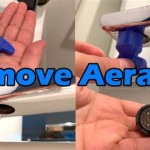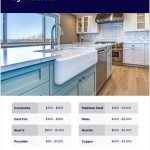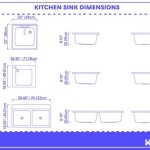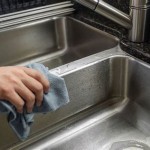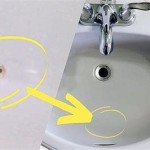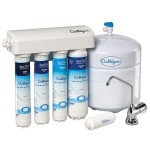Fireclay Sinks: Pros and Cons
Fireclay sinks have become increasingly popular due to their robustness, durability, and aesthetic appeal. Crafted from a blend of clay and crushed fireclay, these sinks are fired at extremely high temperatures to achieve a vitreous, non-porous surface that withstands stains, scratches, and heat. However, it's crucial to consider both the advantages and disadvantages of fireclay sinks to make an informed decision before investing in one.
Pros of Fireclay Sinks:
**Durability**: Fireclay sinks are renowned for their exceptional durability. Their vitreous surface is highly resistant to wear, tear, and impact, making them an ideal choice for busy kitchens. Unlike stainless steel or porcelain sinks, fireclay sinks are less prone to dents, scratches, or discoloration, ensuring a long-lasting and pristine appearance.
**Heat Resistance**: Fireclay sinks boast excellent heat resistance, making them suitable for direct contact with hot pans or pots. They can withstand temperatures up to 1,650 degrees Fahrenheit, preventing damage or warping from extreme heat.
**Non-Porous Surface**: The vitreous surface of fireclay sinks is non-porous, which means it does not absorb liquids or stains. This feature makes fireclay sinks highly hygienic and easy to clean, preventing the buildup of bacteria or mold.
**Stain Resistance**: Fireclay sinks are highly resistant to stains caused by coffee, tea, wine, or other acidic or pigmented substances. Their non-porous surface effectively repels liquids, ensuring that your sink remains immaculate over time.
**Aesthetic Appeal**: Fireclay sinks are available in a wide range of colors and finishes, including matte, glossy, and textured. This versatility allows you to complement any kitchen décor, whether traditional or contemporary.
Cons of Fireclay Sinks:
**Weight**: Fireclay sinks are significantly heavier than stainless steel or porcelain sinks due to their dense composition. This can make them more challenging to install and may require additional support or reinforcement during installation.
**Price**: Fireclay sinks tend to be more expensive than other types of kitchen sinks. Their high manufacturing costs and the intricate firing process contribute to their elevated price point.
**Limited Color Options**: While fireclay sinks offer a range of colors and finishes, their color palette is narrower compared to other materials like acrylic or composite sinks.
**Fragility**: Despite their overall durability, fireclay sinks can be susceptible to chipping or cracking if subjected to sudden temperature changes or extreme force. Therefore, it's essential to handle them with care to avoid potential damage.
**Slow Drainage**: Fireclay sinks have a slightly slower drainage rate compared to other sink materials due to their smooth, non-porous surface. This can result in minor pooling of water, but it doesn't typically affect the functionality or usability of the sink.

Fireclay Vs Cast Iron Sink Pros Cons And How To Choose Van Dyke S Rers

Fireclay Vs Cast Iron Sink Pros Cons And How To Choose Van Dyke S Rers

Fireclay Vs Cast Iron Sink Pros Cons And How To Choose Van Dyke S Rers

Fireclay Sink Pros And Cons A Comprehensive List Angi

Fireclay Farmhouse Sink Review The Good Bad Everything You Need To Know Sinkology

Fireclay Vs Cast Iron Sink Pros Cons And How To Choose Van Dyke S Rers

Pros And Cons Of Farmhouse Sinks My Honest Review Hudsonfarmhouse

Is A Farmhouse Sink Right For You Exploring The Pros And Cons In 2024

Farmhouse Sink Review Pros Cons Liz Marie Blog

Fireclay Vs Cast Iron Sinks Which Is Better
